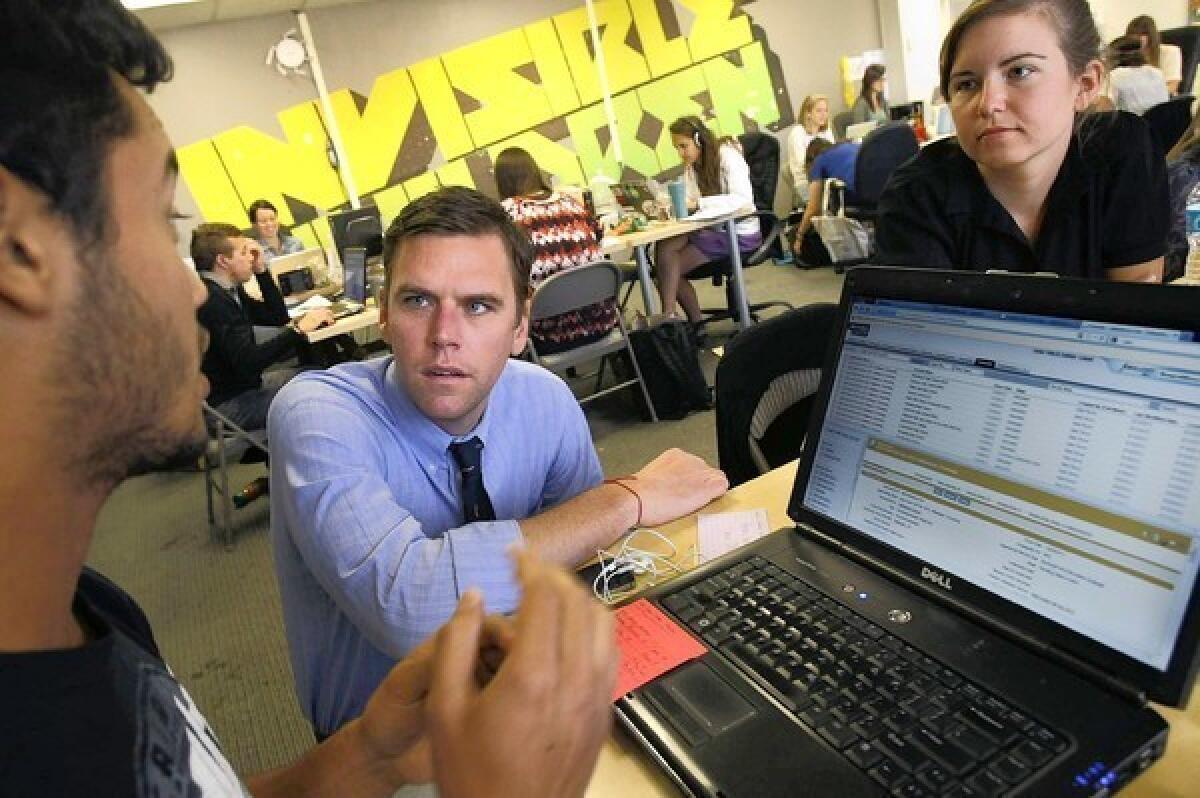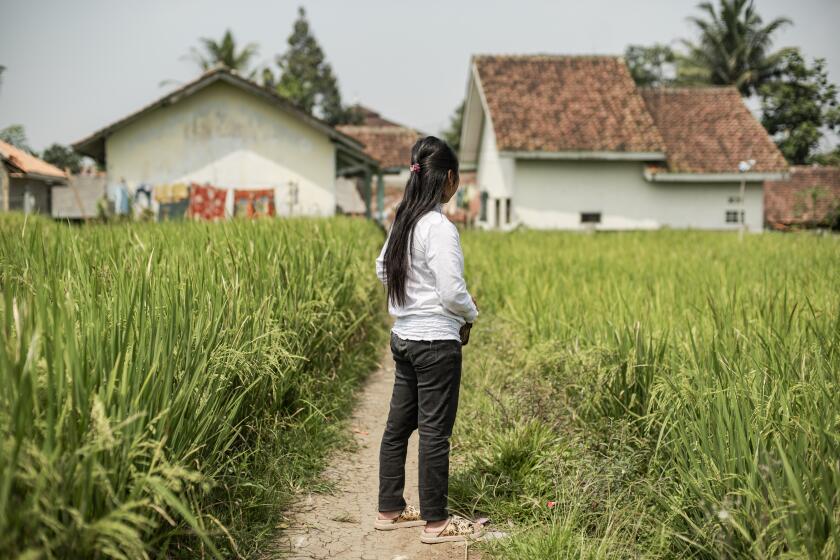Group behind âKony 2012â wins new respect

Itâs been nearly four months since âKony 2012â exploded into public consciousness as a rare bird: an Internet video that captivated the multitudes with a story of geopolitics and human suffering, not a pop divaâs star turn.
The video about a brutal militia leader in central Africa topped 70 million views in the first week of its release in March. Invisible Children, the human rights group that produced the piece, just as quickly became the object of derision. Critics said the San Diego-based organization had oversimplified and distorted the story of Joseph Kony and the Lordâs Resistance Army, or LRA, which has kidnapped children and turned them into sex slaves and boy soldiers for more than a quarter of a century.
Now the story of âKony 2012â appears to be turning again. Invisible Children has continued to pound away on its core mission of publicizing LRA atrocities. And last week, the rights group received credit from diplomats and activists for helping keep the pressure on for what finally may be an international initiative to move against the fugitive Kony.
The United Nations Security Council on Friday endorsed a plan for ending the threat from Kony and reintegrating his victims into countries â including Uganda, the Central African Republic and the Democratic Republic of Congo â where his militia has abused civil society. The African Union organized a coalition that pledges by the end of the year to put 5,000 troops from four African nations in the field to hunt Kony.
And on Wednesday, a U.S. House committee agreed to expand a State Department fugitive program, making those who track down Kony and his supporters eligible for reward money that can range from $1 million to $25 million. All this received coverage from a few wire services and Africa-focused news outlets, but little attention from big news media in the U.S.
Jan Egeland, deputy executive director of Human Rights Watch, said he greeted the progress on ending the LRA threat with mixed emotions.
âOn the one side, we are so grateful there is this new regional program ⦠that seems to take this problem really seriously,â said Egeland, who tried to get action against Kony when he was a U.N. undersecretary-general, beginning in 2003. âOn the other side, we are now in the 26th year of the problem.â
Many nonprofit groups and the U.N. struggled for years to bring attention to Konyâs atrocities and slowly built a consensus to stop him. Egeland called Invisible Children and its hyper-viral video âa big net plusâ in super-charging the discussion.
âAll attention is in my view good, because there is one thing a mass murderer like Joseph Kony and his terrorist movement thrive on, and that is our neglect, our lack of attention,â Egeland said in an interview from New York. âThey thrive in the shadows.â
Francisco Madeira, the African Unionâs special envoy on the issue, also praised Invisible Children, which he said âhas been able to make the world know there is a tyrant in Africa who is maiming, raping and destroying the lives of young, young Africans.â
Invisible Childrenâs chief executive, Ben Keesey, said that he was gratified to hear those words but that the organization and many others working on the issue must keep up the pressure to make sure the four nations who have promised to hunt Kony â Uganda, Sudan, Congo and the Central African Republic â follow through.
Keesey, 29, has become the public face of Invisible Children. A video update he provided in May has notched only about 60,000 views online. But Keesey said the group expected in the year beginning in September to give 3,000 presentations about Kony at high schools, colleges, libraries and other locations.
The group began its work in Uganda in 2005 and now supports a radio network to warn of impending LRA attacks, a public information campaign to encourage defections from the militia, and rehabilitation and schooling for those who have left the group.
Invisible Children delivered 3.7 million pledges last week to the U.N. from followers who promise they will keep up pressure for Konyâs capture. The group said it planned to add a few more employees to a staff that already numbers 40 at the San Diego headquarters and 85 in Africa.
âThe true test of the impact of all of this is whether the lives of people living in the LRA areas are getting better,â Keesey said. âItâs never enough just to have it discussed.â
Twitter: latimesrainey
More to Read
Sign up for Essential California
The most important California stories and recommendations in your inbox every morning.
You may occasionally receive promotional content from the Los Angeles Times.











